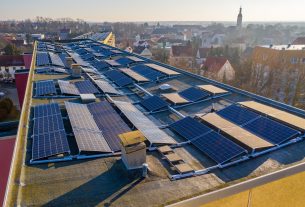In this new series, The Applied Ecologist is amplifying the staff and student voices from the University of Surrey’s Centre for Environment and Sustainability to showcase their diverse, interdisciplinary body of work and to help inspire the next generation.In this post, Ana talks about the Space4Nature Research project.
Meet Ana Andries
I am currently a Lecturer in GIS, Remote Sensing, and Environmental Assessment at the University of Surrey, where I am leading a groundbreaking and internationally awarded research project focused on mapping key habitats in Surrey County. My work leverages machine learning (ML) techniques, Earth Observation (EO) data and citizen science data to significantly enhance the accuracy and efficiency of habitat mapping, with the ultimate goal of informing and improving conservation strategies.
I hold a PhD in Sustainability from the University of Surrey’s Centre for Environment and Sustainability (CES). My research has primarily focused on the use of EO satellite data, critically assessing its potential to support Sustainable Development Goal (SDG) indicators. With a strong background in Environmental Geography and Conservation Biology, I bring extensive knowledge in biodiversity, soil health, and climate change to my work. I am also proficient in spatial analysis, digital mapping, and remote sensing, applying these skills to address not only environmental issues but also social global challenges such as corruption, education, poverty, and inequality through the innovative use of satellite imagery.
What are you working on right now?
One of the most exciting aspects of my current research is the application of ML algorithms, specifically supervised classification through Random Forest (RF), Support Vector Machine (SVM) classifiers, and RF regression to predict and classify level 3 and 4 UK Hab classes across Surrey. This project integrates citizen science data with satellite data and environmental variables, including topographic features, soil types, and vegetation indices, to create detailed and accurate maps of these ecologically significant areas.
Right now, I am focused on refining the classification models and validating them with ground-truth data collected from field surveys. This step is crucial to ensure the reliability of the machine learning models, which will ultimately support conservation planning and habitat management in the region.
Who are you working with and what stakeholders are involved?
My research is deeply collaborative, involving several key partners and stakeholders I collaborate closely with the Surrey Wildlife Trust (SWT), who provide essential guidance on understanding the ecological functions of habitats. Their expertise is instrumental in helping me select the environmental variables that are characteristic of individual habitats. Additionally, SWT is responsible for the collection of citizen science data, which plays a crucial role in validating and refining our models.
Buglife, another key partner in this project, is responsible for habitat restoration efforts. Our research findings guide Buglife in identifying habitat degradation by analysing vegetation indices derived from satellite data, enabling them to target restoration efforts more effectively.
Engagement with the local community is also a critical aspect of this project. We involve citizen scientists in data collection, which not only enhances the spatial and temporal coverage of our monitoring efforts and ML models but also fosters greater public awareness and involvement in habitat conservation and biodiversity.
Why is this project important?
This project is crucial because it involves mapping Surrey County’s habitats using the UK Habitat Classification at levels 3 and 4, providing highly detailed and accurate data. These maps are essential for several key areas: they support the Biodiversity Net Gain (BNG) policy, which aims to ensure that development projects leave the natural environment in a better state than before. Additionally, this work underpins conservation efforts by offering precise information that can guide habitat management and restoration activities.
The project also plays a vital role in natural capital investments, where accurate habitat mapping informs decisions on where to invest in preserving and enhancing ecosystem services. Furthermore, these detailed habitat maps are invaluable for ecological research, land-use planning, and policy-making, ensuring that Surrey’s natural landscapes are managed sustainably for future generations.
What are the future implications of your research?
The implications of this research extend beyond the boundaries of Surrey. The methodologies and models developed in this project have the potential to be applied to other regions, contributing to global efforts in habitat conservation. Moreover, by demonstrating the effectiveness of integrating machine learning with citizen science and remote sensing, this project could pave the way for more innovative approaches in ecological monitoring and management.
In addition, our research has significant potential to shape the future of habitat conservation and management. One exciting avenue we aim to explore is assessing habitat quality using satellite data combined with citizen science efforts. Although this goes beyond the current scope of the Space4Nature project, it is a critical area that could be considered in a potential follow-up project. Understanding habitat quality is vital for the success BNG initiatives and broader conservation efforts. By integrating these advanced techniques, we can provide more detailed insights that will further support the preservation and enhancement of England natural landscapes.
Ultimately, I hope that this research will lead to more informed and effective conservation policies, not only for Surrey County habitats but also for other critical habitats national and worldwide.
More Details about Space4Nature project
For more information about the the Space4Nature project, please go to: https://space4climate.com/space4nature_showcase/



